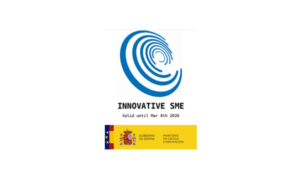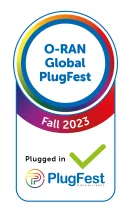THE RAN AUTOMATION JOURNEY
Part 1 – SON and network cloudification
Published on 13th February 2024
This is Part 1 of a three-part series about the RAN automation journey, starting with the deployment of C-SON Apps in LTE networks. It is then followed by the adoption of cloud-native infrastructure for 5G networks, which provides the foundation for programmable intelligent mobile networks.
Part 2 explains why the Open RAN RIC is poised to be a game changer for RAN automation, even in non-Open RAN networks. Part 3 examines RIC platform programming environments and the ramifications for developers of RIC rApps/xApps working with different vendors. When market vision meets reality is not all that pretty.
5G drives the need for mobile network automation
MNOs are striving to build out 5G network infrastructure to keep pace with coverage and capacity demands imposed by an ever-increasing number of connected users and devices. They also face the challenge of delivering and monetizing a new generation of 5G service offerings with stringent requirements for throughput, latency, reliability and security.
Due to the complexity of operating 5G networks at scale, network automation is essential for MNOs to achieve these objectives. Automation plays a critical role in:
- Service provisioning and network configuration
- Optimal utilisation of network resources to ensure coverage, capacity and quality
- Self-healing networks with immediate response to faults and anomalies
Automation is critical for reducing OPEX by simplifying and streamlining operational workflows, enabling MNOs to deliver 5G services profitably. For ultra-reliable services, automation becomes a must-have, not a nice-to-have capability. Split-second incident response means taking human operators out of the decision-making loop.
The SON enables programmable RAN automation
In 2008, the 3GPP introduced specifications for Self-Organizing Network (SON) capabilities as part of Release 8 for LTE. SON enables programmable RAN automation for:
- Self-configuration
- Self-optimisation
- Self-healing
For closed-loop automation, SON works by collecting and analysing RAN data, computing KPIs and then driving RAN automation functions, which may be operator-supervised or fully autonomous. SON reduces operating expenses, ensures that RAN resources are efficiently utiliaed, and enables rapid incident response to network faults and performance anomalies.
There are two types of SON: Distributed SON (D-SON) and Centralised SON (C-SON).
Distributed SON (D-SON) algorithms are confined to processing elements and data co-resident with radios at the edge of the network (ENodeB’s in LTE) and support closed-loop automation response on the order of seconds.
Centralised SON (C-SON) algorithms are executed in a central management system and process data collected from all RAN edge nodes. However, C-SON is latency constrained and can only support closed-loop automation response on the order of 15 minutes.
SON falls short of its initial promise
While C-SON was a first step for some MNOs on their RAN automation journey, the market for SON App developers and platform providers turned out to be smaller than initially projected, for several reasons.
- First, the leading RAN equipment vendors maintained a firm grip on exposing the underlying functions and data required for developing SON Apps. D-SON Apps are primarily provided by the RAN equipment vendors.
- Second, due to the proprietary nature of legacy RAN infrastructure, C-SON Apps are vendor-dependent, which means developers need to customise C-SON Apps for specific C-SON platforms and RAN vendor environments.
- Third, closed-loop automation at 15-minute intervals for C-SON Apps is unacceptable when immediate action is required, either for self-optimisation or self-healing use cases.
In retrospect, the market was never going to fulfill its initial promise, given the proprietary nature of a RAN equipment market dominated by a select group of leading vendors. Market conditions have never been conducive to a thriving ecosystem of independent C-SON App developers and platform providers.
Telecom network cloudification
Despite C-SON’s shortcomings, the future of RAN automation is bright, with the next step on the RAN automation journey being network cloudification.
More than a decade ago, the emergence of software-defined networking and network function virtualisation started the telecom industry on the path to disaggregated, virtualised, cloud-native infrastructure. The benefits of migrating away from vendor-proprietary platforms are well-understood:
- Software-driven network infrastructure
- Low-cost, common-off-the-shelf hardware platforms
- Container-based virtual network functions
- DevOps methodologies for rapid service deployment
- Network flexibility for breakthrough service agility
MNOs migrating from 5G Non-Standalone to 5G Standalone networks are adopting cloud-native infrastructure, which has major implications for the deployment of programmable intelligent networks.
Cloudification for programmable intelligent networks
The 3GPP’s 5G Service Based Architecture (SBA) embodies the principles of software-driven, cloud-native, network infrastructure, defining an architecture that is well-suited for programmatic control via open APIs that specify service-based interfaces between application and network functions.
The 3GPP’s 5G SBA was also conceived for utilising AI and machine learning to generate insights into current and predicted service usage, mobile device behaviour and network conditions. For most MNOs, the first step is for AI/ML to augment the decision-making capabilities of human operators, but the ultimate goal is closed-loop automation, with no operator intervention required.
Cloudification for Open RAN infrastructure
Separate from the 3GPP’s 5G SBA, a parallel industry initiative – the O-RAN ALLIANCE – is developing specifications for RAN infrastructure that is open, intelligent, virtualised and fully interoperable. The intent is to enable the adoption of multi-vendor networks that are better performing, lower cost and easily enhanced by defining standard specifications that ensure multi-vendor interoperability.
Part 2 takes a close look at the Open RAN RIC, an open approach to programmable RAN automation designed to fully realise the initial promise of C-SON and D-SON Apps.




